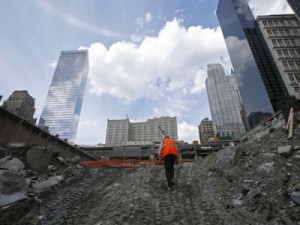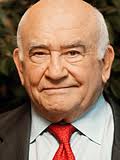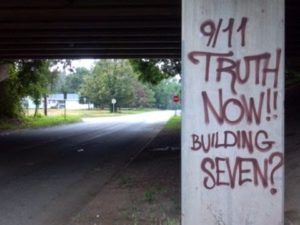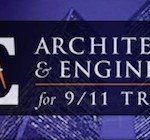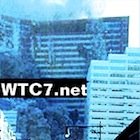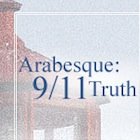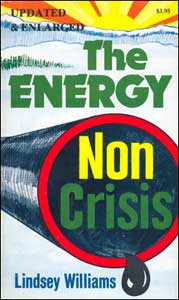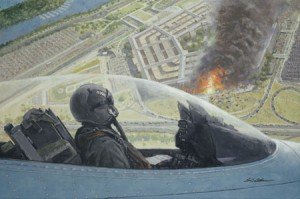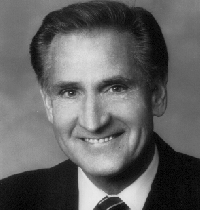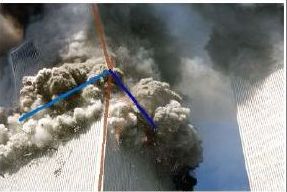Why We Expend Energy on Proving Large Plane Impact at the Pentagon
Explanation of the Evidence at the Pentagon on 9/11
Created by Wayne Coste, narrated by David Chandler
Original article here: http://911speakout.org/wayne-coste/
Introduction and Summary
In December 2017 the 9/11 Consensus Panel issued a statement addressing the controversy within the 9/11 Truth Community about what happened at the Pentagon. The concern was that the disagreements in this area threaten to undermine good will and mutual trust. The statement offers the prescription, “Contributions seeking to solve contentious issues can only be made by assembling reliable evidence and by applying critical thinking and peer review according to the standard scientific process. This is the strength of science and the way it has progressed over centuries.” and concludes, “In conclusion, we offer the “agree to differ” approach: to end an argument amicably while maintaining differences of opinion until there is an explanation that does justice to all the various types of evidence.”
Over about a three year period Wayne Coste has been engaging in dialogue with some of the leading contenders for theories alternative to large plane impact and has been assembling a comprehensive compilation of the evidence that any successful theory must answer. When he read the Consensus Panel’s statement he saw it as a challenge that he had largely already met. He pulled together his research and assembled it as a single presentation entitled, “Explanation of the Evidence at the Pentagon on 9/11.” He re-framed this as “Answering the 9/11 Consensus Panel Challenge.” He turned the Powerpoint into a video, with the downside that the running time was a virtually unwatchable 5h 40m. He just wanted to “get it out there.” I saw the tremendous value of this body of work, so I stepped in and offered to narrate the video as a more manageable series of chapter-by-chapter videos.
The work is extensive, so the video series is lengthy. To help navigate the scope of the issue we have compiled a short video summary of the primary findings. The summary is keyed to the “chapters” of the video series, so you will be able to easily navigate to the sections of most interest if you don’t want to invest the time to work through the whole series all at once.
Full Video Series
Chapter 0: Preface
Bitchute / YouTube
The focus of these videos is on the question, “What mechanism caused the damage at the Pentagon on 9/11.” As Wayne says, “If you care enough to have an opinion about what happened at the Pentagon, you should care enough to know what the evidence is and what it shows.” Many discussions have focused on specific details in isolation, have ignored or misrepresented vast amounts of evidence, or dismissed evidence on flimsy grounds. This kind of comprehensive treatment is important because an incomplete understanding of the event leads to erroneous conclusions. It is important that we present reasonable accounts of the evidence if we want to be taken seriously by the public.
Chapter 1: Overview
Bitchute / YouTube
What we can all agree on; what will not be considered; Consensus Panel treatment of the Pentagon issue; overview of the geography of the Pentagon and its surroundings; the structure of the Pentagon.
Chapter 2: Endless Pentagon Debates; How Did We Get Here?
Bitchute / YouTube
The history of the ideas (not the personalities), asking how we got stuck in the heated debate we have today. Thierry Meyssan’s “The Frightening Fraud”; the “16 foot hole” meme; “Missing Wings”; “Loose Change”; “In Plane Sight”; the “reinforced concrete” meme; Dodgy Dodds; “The New Pearl Harbor” (movie); persistent claim that “evidence is Photoshopped.”
Chapter 3: Size of the Opening in the Pentagon
Bitchute / YouTube
The persistent “hole too small” error; structure of the outer wall of the Pentagon; nature of the “blast resistance” upgrades to Wedge 1; blast resistant windows, not blast resistant walls; the 96 foot opening in the first floor; evidence from composite photographs; detailed examination of missing or damaged columns; specific contentious damaged columns; the 18 foot opening in the second floor.
Chapter 4: Design, Construction and Destruction of E-Ring Wall
Bitchute / YouTube
Design, construction, and destruction of the E-Ring exterior wall; misleading and downright false information that has persisted in discussions over the years; response to the 1996 Khobar Tower bombing and the issue of flying glass; total lack of reinforced concrete; collapsed wall photos as evidence that the actual construction matches the documentary descriptions.
Chapter 5: The Tree at Column 16
Bitchute / YouTube
Did you realize there was a tree at the point of impact? It has almost never been mentioned in the Pentagon discussion. What happened to the tree and where it is found in the rubble tells us something about the nature of the event.
Chapter 6: Review of the C-Ring Exit Hole at the Pentagon
Bitchute / YouTube
Nature of the hole; how heavy debris could travel from the impact point to the exit hole; structure of the C-Ring wall; distribution of debris.
Chapter 7: Plane Approach Path
Bitchute / YouTube
Evidence for the path of the plane: radar, FDR, eyewitnesses, physical damage; impossibility of the CIT north path; notch in the tree by the overpass; light pole damage; g-forces for the plane to pull out of its dive; the consistency of all the various lines of evidence.
Chapter 8: Plane Impact Analysis
Bitchute / YouTube
Generator trailer damage (right engine); retaining wall gouge (left engine); yaw rotation due to engine impacts; interaction with the cable spools; detailed progress of impact of the left and right wings and the affected columns; where the tail went; locations of the spools before and after impact.
Chapter 9: A Comprehensive Review of the Lloyd England Accident Scene
Bitchute / YouTube
Lloyd England’s taxicab is evidence that the downing of the light poles was a real-time event that could not have been staged ahead of time. This single piece of evidence therefore discredits any theory that eliminates a large plane flying along the path of the downed light poles. CIT responded by interviewing Lloyd England and accusing him of being an accomplice to the staging of the scene based on supposed contradictions in his story. This section examines all the fragments of the first two light poles and determines which piece actually hit the taxi, providing in a factual basis for evaluating Lloyd England’s story.
Chapter 10: Analysis of the CITGO Security Cameras
Bitchute / YouTube
One of the security camera videos that was released is the camera at the CITGO gas station, between the Pentagon and the Navy Annex. The images are low resolution and taken at one frame per second, but there is a single frame that captures the shadow of the incoming plane as it passes just to the south of the station.
Chapter 11: Pentagon Security Camera Analysis
Bitchute / YouTube
Two closely spaced security cameras, recording at one frame per second, captured the plane as it crossed the lawn. These images have been attacked by some as having been Photoshopped to show the plane. This section evaluates the differences in the two videos and assesses their authenticity. The two videos were combined onto a single recording device, so the frames are necessarily staggered. Internal evidence is used to measure the time lag between the two sets of frames, and the resulting calibration is used to derive a measurement of the speed of the plane, independent of assumptions from any other sources. The resulting speed measurement is in good agreement with the radar and FDR data.
Chapter 12: Debris
Bitchute / YouTube
Debris expectations; the Sandia F-4 crash test; the outside debris field; distribution of debris; mechanism for spreading light vs heavy debris; evidence for a trailing air mass behind the plane; specific debris pieces of note; identifiable airplane debris in the AE drive outside the C-Ring exit hole; identification of engine parts; verification of the engine type; sifting for human remains.
Chapter 13: Evidence of Explosions
Bitchute / YouTube
Lack of definitive evidence of explosions; the fireball captured in a Daryl Donley photograph and confirming live news footage; uplifted second floor slab; remnants of columns 15-17 pushed inward, not outward; bowed and broken internal columns; debris distribution on lawn and outside C-Ring hole not consistent with explosions; lack of evidence for explosions initiating roof collapse.
Chapter 14: The April Gallop Lawsuit
Bitchute / YouTube
A case study in what happens when insubstantial 9/11 evidence is relied upon in court. Doctrinaire attitudes toward the events of 9/11 do not play well in court. We need to get it right!
Chapter 15: Ground Effect and Yaw Rotation
Bitchute / YouTube
The physics of flight and creation of wingtip vortices; the nature of ground effect; the Boeing 720 crash test; implications for the plane at the Pentagon flying far over the recommended speed very near the ground.
Chapter 16: Porter Goss and the Sonic Boom
Bitchute / YouTube
The loud sound, documented by multiple recordings and mistaken by some for an explosion is shown to actually have been a sonic boom.
Chapter 17: Citizen Investigation Team Interviews
Bitchute / YouTube
The CIT hypotheses: no impact, northern flight path, plane flew over the Pentagon; questions about CIT methodology; comparison of CIT interviews with earlier interviews of the same subjects; George Am; Lloyd England; Chadwick Brooks; William Lagasse; Lagasse’s correspondence with Dick Eastman; Robert Turcios.
Conclusion: Submission to the 9/11 Consensus Panel Challenge
Bitchute / YouTube
Conclusions as they relate to the “Consensus Panel Challenge.”
Addendum: Peer Review Comments
Bitchute / YouTube
Background information on the physics of ground effect by Tim Michel.
